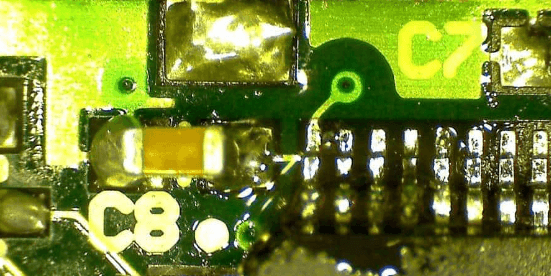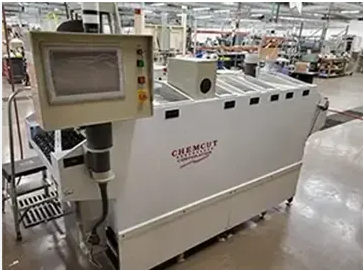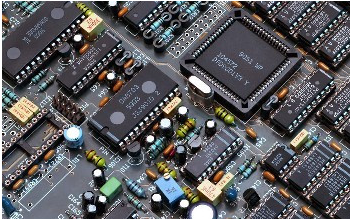Revolutionizing Production: The Future of Automated Electronics Assembly
Key Takeaways
Automated electronics assembly is at the forefront of transforming the manufacturing sector, particularly in the production of pcba (printed circuit board assembly). The integration of advanced robotics in pcb assembly processes has led to significant improvements in speed and efficiency. By minimizing human error and enhancing precision, these robotic systems enable manufacturers to produce complex electronic devices at an unprecedented rate. Furthermore, the utilization of artificial intelligence plays a pivotal role in streamlining operations. It optimizes not just the assembly line but also the entire supply chain, resulting in reduced costs and improved turnaround times. As demand for smaller, more complex components grows, these innovative technologies become essential for meeting market requirements. Companies can now adapt swiftly to changes in production needs without sacrificing quality or reliability. The evolution witnessed in automated electronics assembly is setting new benchmarks for excellence within the industry, heralding a future where agility and quality coalesce seamlessly.
Introduction to Automated Electronics Assembly
The landscape of electronics manufacturing is undergoing a significant transformation through automated electronics assembly. This practice involves sophisticated pcb assembly techniques, which enable the seamless integration of various components to create advanced electronic devices. Modern pcba processes incorporate cutting-edge technologies that enhance both the speed and accuracy of assembly operations. As industries strive for higher standards of efficiency, these automated systems are emerging as vital tools for companies looking to remain competitive. The implementation of robotics and automation not only reduces human error but also allows for consistent quality in every batch produced.
“Embracing innovation in electronic assembly will be key for manufacturers aiming to optimize workflows and reduce costs,” says an industry expert.
This shift towards automation helps manufacturers respond to the growing complexity of electronic devices by offering scalable solutions that can adapt to different production requirements. As we delve deeper into this evolving field, it becomes apparent that the future of manufacturing is inextricably linked with these advancements in automated systems, which promise not only increased productivity but also the ability to meet intricate design specifications with ease. In essence, the rise of automated pcb assembly signifies a new era defined by technological prowess and the relentless pursuit of excellence in production practices.
The Role of Robotics in Modern Manufacturing
In today’s fast-paced manufacturing landscape, the integration of robotics into automated electronics assembly processes has become pivotal. Robotics brings a myriad of benefits, particularly in pcb assembly and pcba workflows. These machines operate with remarkable speed and accuracy, reducing the chances of human error while maintaining high output levels. For instance, robotic arms equipped with advanced sensors can perform repetitious tasks such as component placement and soldering with precision that surpasses manual methods.
This technological evolution is not just about speed; it’s about enhancing overall productivity and reducing production costs. The capability to program robots to handle various tasks allows manufacturers to scale operations seamlessly, adapting to different production demands without the need for extensive retraining or downtime.
The table below illustrates the key advantages of integrating robotics into any electronics manufacturing setup:
| Feature | Benefits |
|---|---|
| Efficiency | Increased production speed |
| Precision | Higher accuracy in assembly |
| Consistency | Uniformity in production |
| Scalability | Adaptable to various demands |
| Labor Savings | Reduced need for manual labor |
By utilizing robotics within automated electronics assembly, manufacturers can meet the growing complexity of electronic devices while ensuring quality and consistency that are increasingly demanded by consumers. The adaptability and efficiency offered by robotic solutions not only improve operational performance but also establish a pathway toward greater innovations in manufacturing practices. As industries continue to evolve, the role of robotics is set to expand further, promising a future where automation and intelligence synergize to redefine production capabilities across the board.
Artificial Intelligence: Enhancing Precision and Efficiency
Artificial Intelligence (AI) is becoming a cornerstone in the realm of automated electronics assembly, particularly in the processes that involve pcb assembly and pcba (printed circuit board assembly). By integrating AI-driven technologies, manufacturers are witnessing substantial improvements in both precision and efficiency. For instance, AI algorithms can analyze vast amounts of data in real-time, enabling systems to identify and correct errors immediately during the assembly process. This capability greatly minimizes waste and optimizes material usage, leading to a significant reduction in production costs. Moreover, AI enhances the adaptability of automated systems; they are now capable of adjusting to various designs and complexities inherent to modern electronics. This results in streamlined workflows that can seamlessly handle multiple product variations without compromising on quality. As such, the role of AI within pcb assembly processes is not merely an enhancement; it is transforming traditional manufacturing paradigms into adaptable, high-precision environments capable of meeting the rapid demands of today’s electronic market landscape with remarkable accuracy.
Cost Savings Through Automation: A New Era in Production
The rise of automated electronics assembly has brought forth significant cost savings across various facets of production. By integrating advanced technologies in pcb assembly, manufacturers can drastically reduce labor costs and minimize human error, which often leads to rework and waste. The application of robotics for routine tasks allows for a quicker turnaround time in the pcba process, optimizing workflows and ensuring that resources are utilized more efficiently. Furthermore, as these systems become more sophisticated, they facilitate a higher throughput, effectively meeting the increasing demand for complex electronic devices. This improvement not only streamlines production timelines but also enhances the overall quality of pcba, enabling companies to maintain competitive pricing while meeting market needs. Innovations such as predictive maintenance powered by artificial intelligence ensure that equipment operates at peak efficiency, thereby reducing downtime and associated costs. In essence, embracing automation in electronics assembly is not merely about cost reduction; it’s about creating a more resilient manufacturing ecosystem that can adapt to ever-changing demands without compromising on quality or reliability.
Addressing Complexity: Meeting Demands with Innovative Technologies
As the landscape of electronics manufacturing evolves, the demand for pcb assembly is becoming increasingly complex. The integration of innovative technologies plays a crucial role in addressing this complexity, enabling manufacturers to adapt to the challenges posed by advanced electronic devices. Automated electronics assembly, driven by robotics and artificial intelligence, offers solutions that enhance agility and precision in production lines. With these technologies, pcba processes can be streamlined, allowing for faster adjustments to design changes and production requirements. This adaptability is essential for meeting customer expectations for high-quality products delivered in shorter timeframes.
Moreover, the advancements in automated systems empower manufacturers to manage intricate assembly processes with higher levels of accuracy. By utilizing intelligent systems that monitor production stages in real-time, manufacturers can swiftly identify potential issues before they escalate. This proactive management not only ensures optimal performance during the pcb assembly lifecycle but also minimizes material waste and operational costs.
In this rapidly changing environment, embracing innovation is imperative for manufacturers aiming to stay competitive. As complexity continues to rise with the introduction of multi-functional electronic devices, leveraging automated technologies will undoubtedly be a key factor in achieving efficiency and scalability within the industry. Ultimately, these transformative approaches will redefine how producers respond to market demands while simultaneously setting new standards for reliability and quality in pcba processes.
Future Trends in Electronics Manufacturing
The future of electronics manufacturing is poised to be significantly influenced by the continuous evolution of automated electronics assembly techniques, particularly in the realm of pcb assembly and pcba (printed circuit board assembly). As manufacturers seek to enhance their production capabilities, innovative technologies are emerging that facilitate faster turnaround times and improved quality in the assembly process. With advanced robotics capable of executing highly complex tasks with precision, the integration of these systems will not only streamline workflows but also reduce the potential for human error. Moreover, the growing use of artificial intelligence and machine learning algorithms will play a crucial role in predicting maintenance needs and optimizing production cycles, thereby further driving down costs.
In light of these trends, companies will increasingly adopt flexible assembly lines that can rapidly adapt to changes in market demand and product specifications. This adaptability is vital for accommodating intricate electronic devices that require more sophisticated assembly solutions. As demand continues to rise for high-quality finished products that meet customer expectations reliably, manufacturers will embrace these advancements to remain competitive. The convergence of technology and manufacturing practices marks a pivotal shift towards an era where efficiency is maximized while maintaining exceptional standards in pcb assembly and pcba processes. Consequently, businesses not only enhance their productivity but also position themselves to address the evolving complexities inherent in today’s electronic products.
Industry Expert Insights: Shaping the Future of Production
As the landscape of pcb assembly continues to evolve, insights from industry experts shed light on the transformative potential of automated electronics assembly. Experts emphasize that integrating robotics into production lines not only streamlines workflows but also significantly enhances the quality and precision of pcba processes. With the rise of artificial intelligence, manufacturers are now able to analyze production data in real-time, allowing for quicker adjustments and minimizing the likelihood of errors. This capability leads to substantial cost savings and a reduction in waste, proving vital as electronic devices become ever more complex. Industry leaders anticipate that as technology advances, we’ll witness a shift toward even more sophisticated methods that will redefine productivity and quality parameters. The collective vision is clear: by harnessing these innovative technologies, manufacturers can create systems that are not only more agile in responding to market demands but also set new benchmarks for reliability and efficiency in electronics production.
Conclusion: Setting New Standards for Quality and Reliability
The evolution of automated electronics assembly is fundamentally redefining the benchmarks for quality and reliability in manufacturing. As companies integrate cutting-edge technologies such as robotics and artificial intelligence, the pcb assembly processes are not only becoming more efficient but also significantly more precise. This leap in technology fosters a manufacturing environment where pcba products are consistently crafted to meet stringent quality standards. Moreover, the ability to monitor production in real-time allows for immediate feedback and adjustments, ensuring that any discrepancies are addressed promptly. As a result, manufacturers can trust that their products are not only of high quality but also can adapt to the growing complexity of modern electronic devices. With increasing demands from various sectors, such as consumer electronics and automotive industries, these developments are vital for sustaining competitive advantage. Ultimately, the continued investment in automated assembly technologies will set new precedents in reliability, encouraging more robust partnerships between manufacturers and their clients while delivering innovative solutions that align with industry needs.
Conclusion: Setting New Standards for Quality and Reliability
As we journey through the evolution of automated electronics assembly, it’s evident that the integration of advanced technologies is not merely a trend but a transformative wave eagerly embraced by the industry. With robotics leading the charge, pcba (printed circuit board assembly) processes are witnessing unparalleled improvements in efficiency, ensuring that production lines operate at unprecedented speeds without compromising quality. The utilization of artificial intelligence has further elevated this landscape, providing systems that enhance precision and minimize the potential for human error, thereby fostering an environment of consistent reliability.
Moreover, as electronics become increasingly intricate, today’s manufacturing processes must adapt to meet these complexities. The innovative technologies at our disposal allow manufacturers to navigate these challenges seamlessly. Cost-effective solutions arise from these advancements, illustrating how automated electronics assembly not only streamlines production but also delivers significant savings in both time and resources.
Industry experts agree that the future points toward even more robust developments, with an emphasis on scalability and quality standards that meet consumer demands without compromise. From smart devices to sophisticated hardware, as complexity increases in electronic design, so too must our approaches to manufacture them. In this context, a focus on continuous improvement within pcb assembly practices will be vital for maintaining competitive advantages and ensuring business sustainability in an ever-evolving market landscape. Through embracing these technological advancements, we set forth a new standard that promises not only quality but also reliability for all future electronic products.
FAQs
As the landscape of automated electronics assembly continues to evolve, many questions arise regarding its implications for the industry. One frequently asked question is: “What is pcb assembly and how does it fit into the larger picture of automated processes?” PCB assembly, or PCBA, refers to the process of placing electronic components onto a printed circuit board (PCB), which is a vital step in developing modern electronic devices. With advancements in automation, such as robotic arms and sophisticated software algorithms, the accuracy and speed of pcba have improved significantly, making it easier to meet the high demands for complex electronics.
Another common inquiry revolves around the role of artificial intelligence in this sector. AI technologies are increasingly integrated into automated systems, enhancing precision during assembly and minimizing human error. Additionally, these advancements allow for real-time monitoring, enabling manufacturers to adapt quickly to any potential issues. The result is not only increased productivity but also a tighter adherence to quality standards.
Moreover, many manufacturers are curious about how they can leverage these technologies cost-effectively. The initial investment in automated systems may be substantial; however, the long-term savings from reduced labor costs and enhanced operational efficiency often justify this expenditure. As outlined by industry leaders, companies embracing automated electronics assembly will be better positioned to tackle the challenges posed by rapidly evolving consumer expectations and technological advancements.
For more insights and detailed information about how you can integrate best practices into your own production processes, please visit our website: click here.






